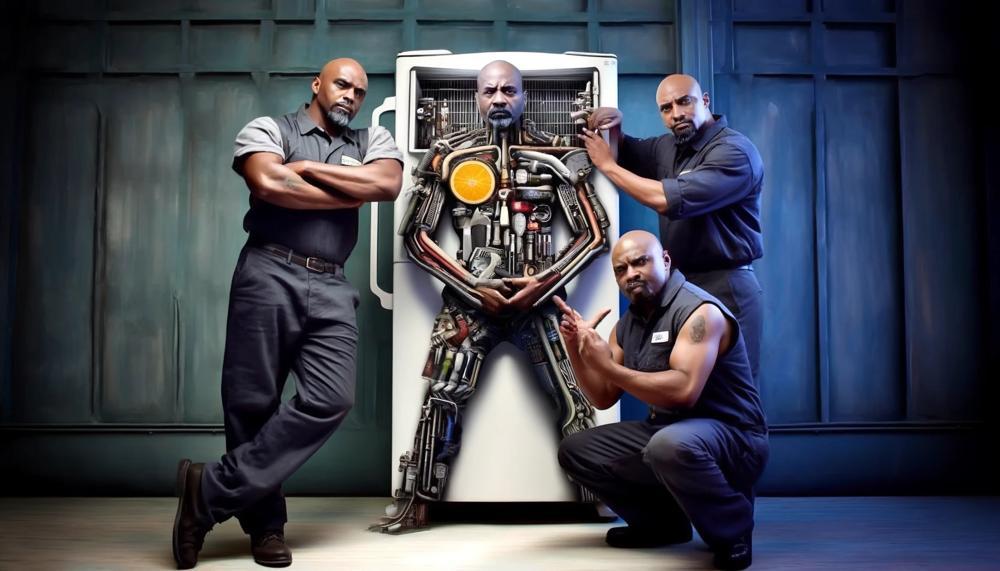Have you heard that prime cuts of meat don’t need refrigeration? It’s a fact. Many people think prime meats like steaks and chops must be kept cold. But they can actually stay at room temperature.
If you like your meat cold or want to keep it fresh, put it in the fridge. This article will help you understand how to store prime meat best.
Let’s explore if prime cuts really need to be chilled.
Though some individuals like their Prime Hydration cold, it is not necessary to refrigerate it. You can refrigerate your Prime if you’d want to keep it cold. Drink it within 24 to 48 hours after opening the bottle for optimal flavor, and then store it in the refrigerator to preserve its freshness and flavor. There are others who claim that Prime tastes best chilled.
To keep Prime Hydration beverages colder for longer—especially on warm days—you can also freeze them. The drink’s flavor or nutritional value are unaffected by freezing, however you should leave some room at the top of the bottle.
Prime is also OK to sip at room temperature. Some drink it at room temperature and find the flavor to be acceptable.
Contents
Key Takeaways:
- Prime cuts of meat can be kept outside the fridge. But, keeping them in the fridge can make them stay fresh longer.
- Refrigeration slows bacterial growth. This helps keep the prime cuts’ taste, texture, and quality better for longer.
- When you do refrigerate them, wrap prime cuts well in plastic or use a sealed container. This stops them from being exposed to air.
- It’s best to keep prime cuts in a fridge set at 40°F (4°C) or lower. This stops bacteria from growing and makes the meat last longer.
- It’s key to follow food safety rules. This makes sure your prime cuts are safe, whether you keep them chilled or at room temperature.
Proper Storage of Prime Cuts
It’s not a must to keep prime cuts of meat in the fridge. Yet, it’s a good idea to refrigerate them to keep them fresh. When you do, wrap them well in plastic or use a sealed container. This stops them from getting spoiled by air.
Keep the meat at 40°F (4°C) or lower to stop bacteria. Doing this can make your prime cuts last longer.
Benefits of Refrigerating Prime Cuts
Keeping prime cuts of meat in the fridge brings many pluses. Firstly, it keeps the meat fresh. This makes sure it tastes and feels good. By cooling the meat, we slow bacteria growth and stop spoilage. So, the meat stays fresh longer.
Also, fridges help keep prime cuts moist. The chilly fridge air locks in the meat’s natural juices. This makes it stay juicy and soft when cooked. So, the taste and eating experience get better.
Moreover, putting prime cuts in the fridge helps avoid cross-contamination. This is key with raw meat. It lowers the risk of bacteria moving to other foods. Keeping prime cuts separate keeps the fridge clean and safe. This helps us dodge health risks.
Refrigeration is crucial for keeping prime cuts of meat fresh, tasty, and safe. By cooling the meat, we keep its quality up and lower bacteria or spoilage risks. Fridges improve meat’s flavor and texture while stopping cross-contamination.
Fridges offer clear perks for storing prime cuts. They keep the meat fresh and tasty. They also ensure safety by stopping cross-contamination. With fridges, we can relish our meat’s flavors and textures, worry-free. It’s stored just right.
| Benefits of Refrigerating Prime Cuts |
|---|
| Maintains freshness |
| Preserves taste and texture |
| Prevents bacterial growth and spoilage |
| Retains moisture, ensuring juiciness and tenderness |
| Minimizes the risk of cross-contamination |
Shelf Life of Prime Cuts at Room Temperature

Understanding the shelf life of prime cuts at room temperature is important. These cuts don’t need to be kept cold but they won’t last long without it. How long they stay good depends on the room’s warmth and the meat’s starting quality.
For safety, eat room temperature prime cuts within two hours. Beyond this timeframe, the meat can start to spoil because of bacteria. This affects both the taste and safety of the meat.
Keeping your prime cuts fresh and safe is essential. After two hours, it’s best to cool them down or cook them. This ensures they are safe to eat.
Tips for Freshness and Quality
To keep prime cuts fresh and top-quality, follow proper storage methods. Here are tips to help you keep your prime cuts fresh and high quality:
Purchase from a Reputable Source
Choose a reputable source when buying prime cuts. Look for trusted suppliers or local butchers known for quality. This ensures you start with fresh and properly handled meat.
Inspect the Packaging
Before storing, check the packaging for damage or spoilage. Look for tears, leaks, or bulges. Avoid storing or using damaged meat to keep it fresh and safe.
Properly Wrap the Meat
Wrap your prime cuts well to avoid air exposure. Use plastic wrap or a sealed container. This maintains the meat’s integrity and slows spoilage.
Store on the Bottom Shelf of the Refrigerator
Place prime cuts on the refrigerator’s bottom shelf. This reduces cross-contamination risk, keeping your meat fresh and safe.
Consume Within a Few Days
For the best taste and quality, eat your prime cuts within a few days. Although refrigeration extends shelf life, fresh is best.
Thoroughly Cook the Meat
Ensure your prime cuts are fully cooked before eating. Thorough cooking removes bacteria. It also improves meat’s flavor and texture.
Table: Storage Tips for Freshness and Quality
| Tips | Description |
|---|---|
| Purchase from a Reputable Source | Choose a trusted supplier for fresh and high-quality prime cuts. |
| Inspect the Packaging | Carefully examine the packaging for any damage or spoilage. |
| Properly Wrap the Meat | Wrap the meat tightly in plastic wrap or place it in a sealed container. |
| Store on the Bottom Shelf of the Refrigerator | Place the prime cuts on the bottom shelf to minimize cross-contamination. |
| Consume Within a Few Days | Enjoy the prime cuts within a few days for optimal freshness. |
| Thoroughly Cook the Meat | Cook the meat thoroughly to ensure safety and great flavors. |
These tips will help you extend your prime cuts’ freshness and quality. Enjoy a better dining experience by following them.
Other Factors Affecting Meat Freshness
More than just cooling, several factors impact how fresh meat remains. Temperature and packaging are crucial. Let’s dive deeper into these aspects:
The Impact of Temperature
Keeping meat at the right temperature is key to its freshness. Prime cuts need a steady temperature to stop bacteria and keep quality high. If temperatures go up and down a lot, the meat can spoil faster. This ruins its flavor and texture.
Storing prime cuts in a fridge helps them stay fresh. A temperature under 40°F (4°C) is best for stopping bacteria.
The Importance of Packaging
How meat is packed matters a lot for keeping it fresh. The right packaging cuts down air contact. This slows oxidation and spoilage. Vacuum packs and tight containers are great. They block air and moisture from getting to the meat.
Check the packaging when buying meat. Quality meat has packages that are intact and sealed well. If you’re at a butcher’s, ask for meat in vacuum-sealed bags for extra safety.
With the right focus on temperature and packaging, your meat can remain tasty and fresh longer.
| Factors | Impact on Meat Freshness |
|---|---|
| Temperature | Proper temperature control helps prevent bacterial growth and maintain meat quality. |
| Packaging | Airtight packaging minimizes exposure to air and reduces the risk of spoilage. |
Understanding Food Safety Guidelines
Storing prime cuts of meat safely is key. You must follow food safety guidelines to keep the cuts fresh. Let’s delve into the important rules you should follow:
Separate Raw and Cooked Meats
It’s crucial to keep raw and cooked meats apart. This step stops cross-contamination and lowers sickness risks. Always store raw cuts in a different container or shelf from cooked meats.
Store at Safe Temperatures
The temperature at which you store your meat matters a lot. Whether in the fridge or at room temperature, follow the safe temperature rules. Refrigeration helps extend the cuts’ life, and room temperature is fine for a short period.
Check for Spoilage
Always check your prime cuts for spoilage signs before eating. Look for any unusual changes in color, texture, or smell. If something seems off, throw the meat away to avoid sickness.
Cook to Recommended Internal Temperature
Cooking prime cuts right is vital for food safety. Each cut has its own temperature needs to kill bacteria. A meat thermometer helps you know the cut’s internal temperature, ensuring it’s safe to eat.
Following these food safety tips helps prevent foodborne illnesses. Store and handle prime cuts properly to enjoy them in a safe and tasty way.
| Food Safety Guidelines for Prime Cuts | |
|---|---|
| Guideline | Description |
| Separate Raw and Cooked Meats | Prevent cross-contamination by storing raw and cooked meats separately. |
| Store at Safe Temperatures | Refrigerate prime cuts or store at room temperature within safe limits. |
| Check for Spoilage | Inspect prime cuts for any signs of spoilage before consumption. |
| Cook to Recommended Internal Temperature | Cook prime cuts to the recommended internal temperature to ensure food safety. |
Conclusion
Prime cuts of meat can stay out of the fridge, but chilling them keeps them fresh longer. Refrigeration safeguards the flavor, texture, and quality. Keep prime cuts cool to make them last longer and stop bacteria from growing.
If you like your prime cuts at room temp, just follow the right storage steps. You need to eat them quickly to stay safe.
The storage method for prime cuts, cold or at room temp, is up to you. If you choose, ensure freshness by buying from trusted places. Check the meat for spoilage and wrap it well to keep air out.
Remember to separate raw from cooked meats and cook them to the right temperature. This keeps the prime cuts safe to eat.
While not necessary, cooling prime cuts can keep them fresh. With good handling and storage, you can enjoy these meats at room temp too. Think about what you prefer and what the meat needs before choosing how to store it.
Source Links




